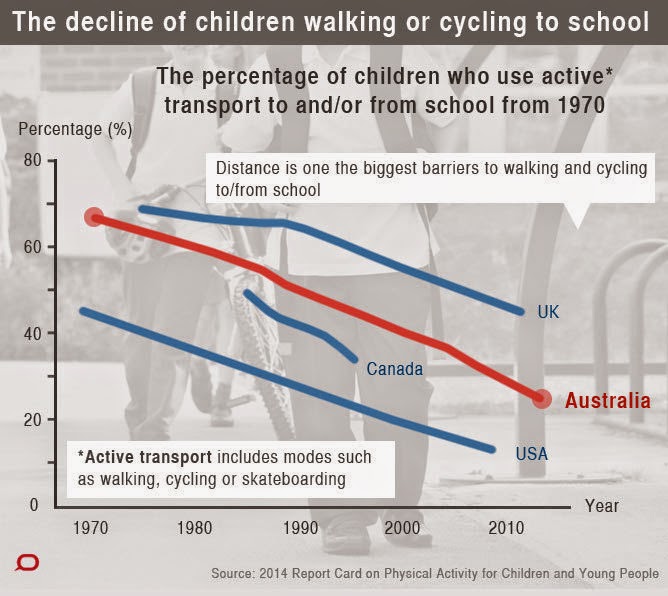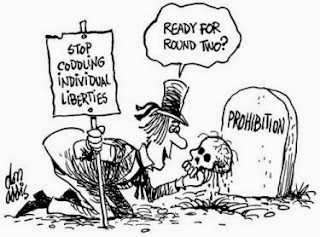I'm now back from Australia. The lies, nonsense and gibberish have naturally continued in my absence, such as
Robert Lustig doing a convincing impression of a raving fanatic and the latest ravings from
Sarah Wollaston, which include this doozy...
[Wollaston] argued that if someone wants to lead an unhealthy lifestyle 'of course that's entirely up to them'.
But the government should intervene, with new regulations if necessary, to make it harder for people to buy junk food.
So not
entirely up to them, then. See
Tim Worstall for a fuller response to Wollaston's nonsense.
But there was one article of such stupendous idiocy - such hysterical, evidence-free garbage - that I cannot let it lie. Vapers are used to pointless, Polly Filler-esque columnists putting pen to paper before engaging their brains but
this, from Rachel Lloyd in the
Telegraph, belongs in a class of its own.
'I thought my e-cigarette was a miracle. Turns out, I was smoking the equivalent of 40-a-day'
When my local chemist told me to stop vaping immediately, or risk seriously damaging my health I thought he must be having a mad half hour.
Kindly Mr Patel has always struck me a cautious man. It seemed ridiculous that he was making such a fuss.
'Such a cautious man'. I suppose appearing to have a reckless, devil-may-care attitude is not a good move if you're dispensing potentially dangerous drugs, but anyway...
I just couldn’t grasp that something as innocuous as an e-cigarette, widely regarded as the safe alternative to real cigarettes – and commonly used by smokers to quit - could come with any lasting health risks.
There is no evidence that inhaling nicotine in a non-combustible form creates lasting health risks, whereas there is
quite a bit of evidence that it doesn't.
Now, I think differently and others are starting to, as well. This week, the World Health Organisation (WHO) recommended that e-cigarettes should be banned indoors, because they emit chemicals potentially as dangerous as cigarettes and have a potential passive smoking risk.
The WHO provide no evidence that there is any evidence of harm from 'passive vaping'.
That's because there isn't any. And no credible scientist believes that e-cigarettes are anywhere near as dangerous as tobacco cigarettes.
That's because they're not.
Doctors are also calling for more research into the long-term effects.
They are indeed, and so they should, but requests for more evidence into a relatively new product are not evidence of harm to the user, let alone to non-users.
I took up vaping two years ago, during a particularly stressful period and soon found myself addicted - puffing away throughout the day.
Nicotine is addictive. Surely you knew that already?
It was the summer of 2012 when I first succumbed to the habit. My lovely stepfather died towards the end of July that year after a brief battle with cancer. His decline was swift it took us all by surprise and it was hard to see him in hospital without dashing outside for secret weeping breaks.
Meanwhile, my mother - always the rock of the family - was battling a rare and punishing neurological disorder known as Chronic Cluster Headache. Seemingly, overnight she went from perfect health to a hellish existence.
To add to the drama, I started hearing a permanent, high-pitched ring in my ears which I suspected might be psychosomatic but was nonetheless terrifying. I was subsequently diagnosed with tinnitus caused by partial hearing loss in my right ear.
Panic stricken, I wondered if I would ever get to sleep without swallowing copious amounts of sleeping pills.
So, the very last thing on my mind when my friend Jason offered me a drag on his e-cigarette one evening at the pub was whether it might be bad for my health.
Why is that, Rachel? Considering the circumstances, I would have thought that health issues would be at the forefront of your mind.
In fact, all things considered, I could easily have forgiven myself for smoking 20 Malboro Lights a day and weeping into my pillow each night in an orgy of self pity.
Yes, OK, we get it. It was the worst of times. However, you
didn't start smoking 20 Marlboro Lights a day. You started vaping instead, which is much the safer option.
That said, I was never a committed smoker. Even back in my twenties my flirtation with nicotine was half-hearted. I was one of those annoying ‘social smokers’ who could be found in pubs ‘borrowing’ fags off bystanders to go with chilled, deliciously deep glasses of Chardonnay.
You do, indeed, sound like an annoying person.
Yet as I sucked on Jason’s e-cigarette (containing, he explained, a harmless amount of nicotine and "few other chemicals") I was struck by how lovely it felt to breathe so deeply.
Jason's description of e-cigarettes, though vague, is basically correct. The enjoyment you got from the e-cigarette probably had less to do with the joy of breathing deeply than the joy of nicotine entering your blood supply.
When very stressed I tend to revert to tight, shallow breathing. Vaping encouraged me to expand my lungs properly - even if I was filling them up with mysterious substances.
The motion of vaping is soothing and instantly calming, without the guilt that accompanies conventional smoking.
I loved the way the tip of my e-cigarette lit up with each drag, mimicking the glow of a cigarette. When I exhaled a sheet of mist shot out of my mouth like a plume of diamond-coloured smoke.
Yes, yes, we've seen them.
Vaping instantly struck me as a hip, environmentally-friendly alternative to smoking. Why wasn’t everyone doing it?
The reason most people use them (which you have managed to ignore) is that they are cheaper and healthier than smoking. Not everybody wants to smoke and most people who vape aren't particularly interested in being 'hip' or 'environmentally-friendly'.
I loved being able to indulge myself in the office, at the cinema, over dinner and on the tube. And when I saw the rather decadent TV adverts for e-cigarettes, earlier this year, I smiled away sucking at the tip of my e-stick. I was already one of the initiated - and it felt good to be 'ahead of the curve'.
I think I hate you.
But as the months went by I began to question the extent of my vaping. I was spending at up to £30 a week on e-cigarettes
I spend less than £10. Presumably you were using a cigalike.
If I left home without it, I would fly into a panic and immediately prioritise finding a chemist.
Yes, you're definitely using a cigalike. By the way, they are available from many shops other than chemists. Or perhaps you haven't found a newsagent who strikes you as sufficiently 'cautious'.
I couldn’t function properly without my new prop and my dependence increased. It had seemed like a relatively harmless habit. Could vaping really be any more threatening to one’s health - and bank balance - than caffeine, or alcohol?
The available evidence suggests that vaping is about as harmful as caffeine (ie. not very much at all) and rather less harmful than alcohol.
Eventually, in June this year, I sought the advice of my chemist as to ‘cutting down’. Mostly, I wanted to save money.
Warning bells sounded as Mr Patel’s usually cheerful countenance clouded over and he told me stop 'smoking' my e-cigarette straight away.
I wouldn't trust the advice of anybody who uses the term 'smoking' about a product that doesn't involve smoke.
“But I thought the whole point was that they were safe?” I asked [not actually a question so shouldn't have a question mark - CJS], feeling like a child whose sweets were being confiscated.
No, the whole point is that are
safer.
“E-cigarettes contain nicotine," he told me, "which can lead [sic] circulation problems and heart disease.
The
existing evidence does not suggest that nicotine causes heart disease. Insofar as they might cause circulation problems, it would be as a result of a mild increase in the heart rate, as you would get from caffeine or the nicotine products that kindly, cheerful, cautious old Mr Patel happens to sell in his chemist.
"Some have also been found to emit formaldehyde, which is a carcinogenic.”
Formaldehyde can be found in apples, pears, bananas, beetroots, apricots, tomatoes, plums, beef, lamb, cabbage and many other natural foods. The dose makes the poison. It is far from clear whether the small amounts of formaldehyde in tobacco cigarettes cause cancer, let alone that much smaller amounts found in
some e-cigarettes do so.
I was horrified, but worse was to come.
Horrified? You said earlier that you thought he was 'having a mad half hour', but never mind.
Two days later I scurried to my doctor for a second opinion. She asked exactly how much vapour I was consuming per hour.
“Up to forty inhalations an hour on a particularly stressful day,” I admitted.
According to her, I was inhaling the equivalent of 40 fags a day – at least in terms of nicotine. There was no doubt about it, I was a vape addict.
If your doctor thinks that a single breath of e-cigarette vapour equates to a whole cigarette then you should seek a third opinion.
Or do some research. [UPDATE: As Geoffers points out in the comments, the doctor is referring to 'up to forty' inhalations per hour. My mistake. Even on a 'particularly stressful day', this is still not the equivalent of 40 cigarettes a day. 30 puffs of 18 mg/ml fluid is the nicotine equivalent of one cigarette. If awake for 15 hours, inhaling 40 inhalations an hour, the equivalent daily cigarette consumption would be one pack.]
My love affair with vaping began to unravel. I just couldn’t continue with the habit knowing the potential dangers.
What a dilemma! How to avoid the dangers of nicotine?
But giving up wasn't easy. It took several attempts to finally quit.
In the end I switched to a nicotine patch and slowly weaned myself off
for good.
That's right, by taking nicotine in a different form. Lovely, safe nicotine from the pharmaceutical industry instead of horrible, killer e-cigarette nicotine.
If I’d known two years ago what I know now, I would never have started vaping.
With the greatest respect, you don't seem to know anything now. Your knowledge of e-cigarettes has actually gone backwards and you haven't made any effort to look at the significant body of research that exists. Assuming that Mr Patel and your doctor actually exist, you have been unfortunate in asking the opinion of two people who have also neglected to read the research. Nevertheless you could have done so yourself before writing pig ignorant rubbish in a national newspaper.
And I would strongly discourage anyone else from taking it up. Yet, even as I write, I can feel a insidious craving to vape – oh the bliss contained in that first puff of e-cigarette.
Talking about the 'bliss' of vaping might not be the best way to 'strongly discourage anyone else from taking it up', but that's your problem, I suppose.
But I will stand firm come what may...
Such valour! It's only a matter of time before this lady is awarded an award for courage. Her bravery in the face of almost insurmountable
first world problems horror brings a tear to the eye.
...and would strongly encourage others to make themselves aware of the risks, too.
I would strongly encourage
you, Rachel Lloyd, to make yourself aware of the risks. If you can't be bothered with PubMed, you can start with
this list. Please don't write anything else about e-cigarettes until you can tell your arse from your elbow.

.jpg)

.jpg)



.jpg)







.jpg)
